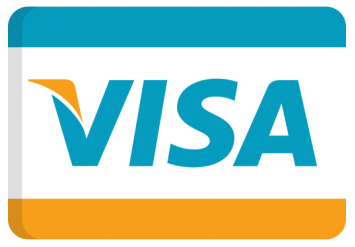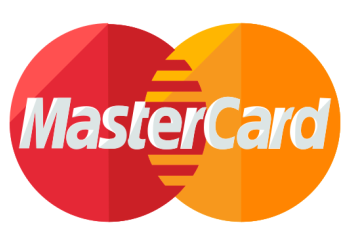If you’ve spent time trying to grow on TikTok, you’ve probably asked yourself how often you should be posting. It’s one of the most common questions for both creators and brands.
There’s no one right answer, but some clear patterns and best practices can help. The key is to stay consistent without overwhelming yourself or your audience.
But how much is too much and how little is too little?
Why Posting Frequency Matters on TikTok
TikTok’s algorithm responds to how users engage with your videos. Watch time, likes, shares, and comments all play a role. But posting frequency also shapes how people remember you.
If you show up often, your content stays in rotation. People start recognizing your face, your style, and your tone. If you go quiet for too long, it’s easy to get buried by newer creators.
Posting consistently gives you a few key advantages:
- You stay visible in people’s feeds
- You build momentum with the algorithm
- You gather more data on what works
More posts mean more chances to improve. You can test hooks, trends, formats, and styles to see what clicks.
So, How Often Should You Post?

For most creators, once a day is a solid target. It keeps you in the mix without burning you out.
If daily posting feels like too much, aim for three to five times a week. This still gives you a steady rhythm and room to grow.
If you have the time and content ready, posting more is totally fine. Two to four posts per day can work well, especially if they’re high-quality and varied.
Just avoid posting for the sake of filling a quota. Weak or rushed videos won’t help you grow.
Here’s a quick breakdown:
- Beginners or solo creators: 3 to 5 posts per week
- Growing creators: 1 to 2 posts per day
- Brands or high-volume accounts: Up to 4 per day if the quality holds
What Happens If You Post Too Little?
If you only post once in a while, you make it harder for yourself. TikTok favors active accounts, and inconsistent uploads usually lead to weaker reach.
You also lose out on learning opportunities. The less you post, the fewer signals TikTok has about your content and audience.
Even one post a week is better than going silent. The key is to pick a rhythm and stick to it. That builds trust with both the algorithm and your followers.
Can You Post Too Much?
Not exactly. TikTok won’t penalize you for posting often, but your audience might.
If your videos start to feel repetitive or rushed, people will scroll past. And if you post too many clips in a short time, they can compete with each other for reach.
The solution is simple. Space out your posts.
Give each one a moment to land. It’s better to post three strong videos in a day than six forgettable ones in an hour.
Once you’ve found a posting rhythm that works for you, the next step is making sure your videos are actually worth watching.
Quality vs. Quantity
It’s easy to assume that posting more often will lead to faster growth. But volume only works if your content holds attention. TikTok favors consistency, but what truly drives results is quality.
That doesn’t mean every video has to be perfect. It just needs to be clear, engaging, and aligned with what your audience expects from you.
Whether it’s a quick trend, a behind-the-scenes moment, or something more thought out, each post should have a reason to exist.
When your videos offer something useful, entertaining, or relatable, they’re more likely to get views and stick with people.
Post with Intention
Posting more often gives you more chances to experiment, but only if you’re learning from it. If you’re just pushing out content for the sake of it, you’ll miss what’s actually working.
Here are a few questions to ask before you post:
- Would I stop and watch this if it came up on my For You page?
- Does this fit with my style or message?
- Am I offering something useful, entertaining, or relatable?
If the answer is yes, then post it. If not, take a step back and tweak it.
A smaller number of meaningful posts will always outperform a flood of forgettable ones. To get the most out of each one, it also helps to post when your audience is actually online.
When Is the Best Time to Post?
Posting consistently is important, but timing can make a big difference too.
The first few minutes after your video goes live are critical. That’s when TikTok decides whether to push your content to more people based on how it performs early on.
If you post when your audience is inactive, you might miss that initial boost. On the other hand, publishing during peak hours can help you get more views, more quickly.
Common High-Engagement Time Slots

While the best time to post can vary depending on your niche and where your audience lives, many creators see strong results during these time blocks:
🌅 Early Morning (6–9 AM) – Great for catching users before school or work. Monday and Tuesday mornings tend to perform especially well as people settle into their week.
☕ Mid-Morning (9–11 AM) – A good window for educational or slower-paced content, especially midweek (Wednesday and Thursday).
🍽️ Lunchtime (11 AM–1 PM) – Scroll breaks are common during lunch, and engagement tends to rise.
🌤️ Afternoon (2–4 PM) – Slightly less active than lunch or evening, but still useful for lighter, more casual posts.
🌇 Evening (7–10 PM) – Often the strongest window for engagement across the board. Ideal for high-energy or personal content.
🌙 Late Night (10 PM–12 AM) – Depending on your audience, late-night TikTok sessions can offer strong views, especially Thursday to Saturday.
Bonus: Weekend Trends
Weekends are a bit different. User behavior is less routine, but:
- Saturday late morning (9–11 AM) often sees high engagement
- Saturday night (7–10 PM) can also work well for entertainment content
- Sunday late afternoon to evening (4–8 PM) is strong for reflective, casual, or wind-down posts
These patterns are helpful starting points, but your audience might behave differently. That’s why testing and tracking are essential.
Use Your Analytics to Fine-Tune
TikTok offers built-in analytics for creators with a business or creator account. One of the most helpful tools is the “Follower activity” section, which shows you when your audience is most active by day and hour.
Here’s how to make the most of it:
- Check which days have the highest activity and aim to post then
- Look for spikes in hourly activity and schedule around those times
- Test different time slots for a few weeks and track what performs best
The more you post and experiment, the clearer your timing sweet spot will become.
Over time, you’ll learn when your audience is actually watching and when your content has the best chance to shine.
Once you have that clarity, the next step is shaping a schedule you can stick to.
Creating a Posting Schedule You Can Actually Follow

There’s no perfect schedule that works for everyone, but having a rough posting plan makes content creation less stressful and more consistent.
A steady routine helps you stay visible, build trust with your audience, and avoid last-minute scrambling.
Here’s a flexible example for creators posting three to four times per week:
| Day | Content Focus |
| Monday | Start the week with something that grabs attention. Use a trending sound, visual format, or strong hook to pull people in. Trend-based content works well here to boost early-week discovery. |
| Wednesday | Share something helpful or informative. Try quick tutorials, behind-the-scenes clips, or value-driven tips. These give people a reason to follow beyond just entertainment. |
| Friday | Let your personality come through. Post a story, talk to the camera, or share something casual. Fridays are great for building a stronger connection with your audience. |
| Sunday | Keep it light and scrollable. Content like relatable humor, sound trends, or cozy, low-effort videos often performs well as people wind down. |
Finding Your Posting Rhythm
If three posts a week feels more realistic, just pick the days when your audience is most active. You can drop Sunday or Wednesday and stick with Monday, Friday, and one weekend slot. Choose whatever fits your flow.
Want to post more often? Try adding bonus content on days like Tuesday or Saturday. These can be lower-effort ideas like a quick reaction, a reply to a comment, or a short thought you film on the go.
If you start running out of content, try batching videos in advance. Or use repeatable themes to take the pressure off. For example:
- “Tutorial Tuesday”
- “Feedback Friday”
- “Sunday Recap”
Little habits like these make your week easier and give your followers something consistent to look forward to.
Final Thoughts
There’s no secret formula for TikTok growth, but one thing always holds true. Consistency makes the biggest difference.
Start with a pace you can actually stick to. Focus on content that feels natural to you and valuable to the people watching. Pay attention to your analytics, experiment with your timing, and don’t be afraid to adjust as you go.
The more you post with purpose, the easier it gets.
👉If you want to give your content a head start, you can buy TikTok views, likes, or comments to help boost visibility while your audience grows.
























